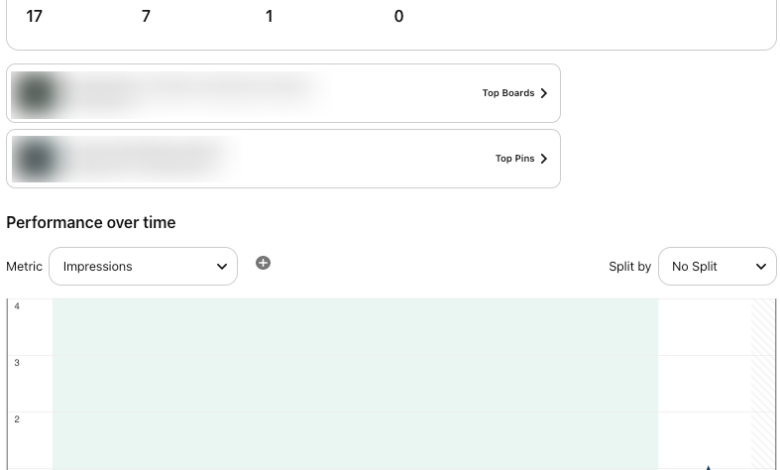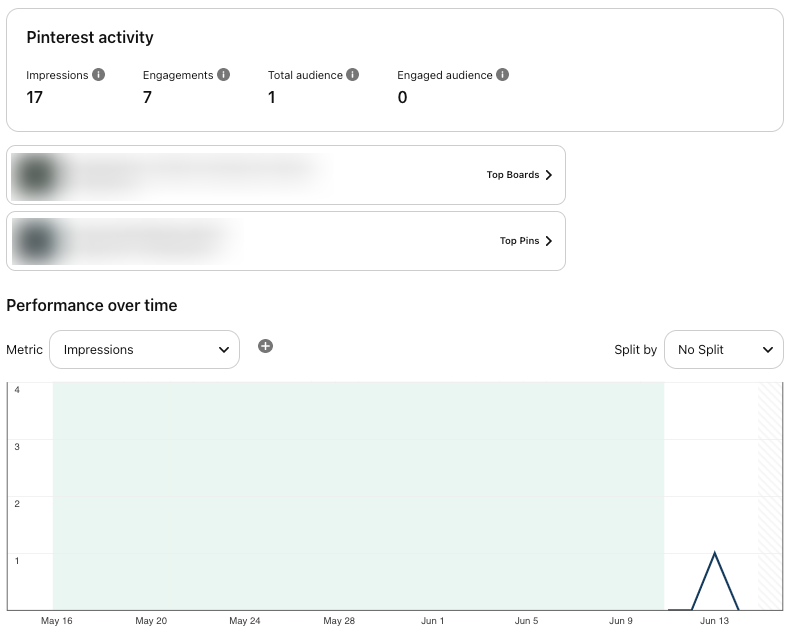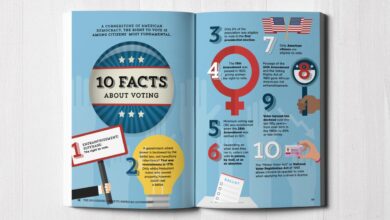
Essential Social Media KPIs to Track
Social media KPIs to track are crucial for understanding your social media performance and aligning it with your business objectives. This in-depth guide dives into various key performance indicators (KPIs) across different platforms, helping you understand what truly matters for your brand.
From engagement metrics like likes and shares to website traffic and brand mentions, we’ll explore how to track, analyze, and leverage these metrics to maximize your social media impact. We’ll also discuss how to differentiate between vanity metrics and actionable ones, so you can focus on data that truly drives results. Learn to choose the right KPIs for your specific business goals and discover how to interpret the results to improve your strategy.
Defining Social Media KPIs

Understanding your social media performance is crucial for strategic growth. Defining and tracking the right Key Performance Indicators (KPIs) is the first step towards achieving your business objectives. This involves identifying the metrics that truly matter for your specific goals, distinguishing between superficial numbers and meaningful insights, and understanding how different platforms perform in the context of your objectives.
Common Social Media Performance Metrics
Social media platforms provide a wealth of data, but not all metrics are equally valuable. A comprehensive understanding includes various engagement metrics, reach, and visibility measures. Key metrics encompass likes, comments, shares, retweets, follower growth, website clicks, and conversion rates. Tracking these allows businesses to assess the effectiveness of their social media strategies.
Vanity Metrics vs. Actionable Metrics
Vanity metrics are impressive numbers that don’t necessarily translate into tangible business results. Examples include follower count and likes. Conversely, actionable metrics directly impact business objectives. These include website clicks, conversion rates, lead generation, and sales. Focusing on actionable metrics allows for more informed decision-making and efficient resource allocation.
Understanding the distinction between these two types is critical to effective social media management.
Choosing Relevant KPIs Based on Business Objectives
The selection of appropriate KPIs depends heavily on your business goals. If brand awareness is paramount, metrics like reach and impressions become vital. For businesses prioritizing lead generation, click-through rates and conversion rates are key indicators. Aligning KPIs with business objectives ensures that the data collected is truly meaningful and supports strategic decisions. For example, a company focusing on e-commerce might prioritize conversion rates, while a brand building awareness for a new product would focus on impressions and reach.
Social Media Platform KPI Comparison
| Platform | Engagement Rate | Reach | Impressions |
|---|---|---|---|
| Likes, comments, shares, reactions | Number of unique users seeing posts | Total number of times content was displayed | |
| Likes, comments, saves, shares | Number of users who see posts | Total times content is displayed | |
| Retweets, likes, replies, quotes | Number of users who see tweets | Total number of times tweets were displayed | |
| Engagement (likes, shares, comments) | Number of users who see posts | Total number of times content was displayed | |
| TikTok | Likes, comments, shares, saves, follows | Number of users who see videos | Total number of times videos are displayed |
This table provides a basic comparison. Specific KPIs may vary based on the individual business objectives and strategies. The key is to identify the metrics that provide the most relevant insights for achieving your goals.
Engagement Metrics
Social media engagement is more than just likes and shares. It’s a crucial indicator of how well your content resonates with your audience. Understanding engagement metrics allows you to tailor your strategy for better results. Tracking these metrics provides insights into what content performs best and what adjustments might be needed to increase audience interaction.Engagement metrics, such as likes, comments, shares, and retweets, offer valuable data on how your audience responds to your posts.
Analyzing these metrics can help you understand what content is resonating most and how to optimize your social media presence for better engagement.
Figuring out which social media KPIs to track can feel overwhelming. But understanding key social media statistics is crucial for making informed decisions. Knowing things like your engagement rate, reach, and website clicks from social media, as detailed in social media statistics , helps you choose the right metrics to focus on. Ultimately, the best social media KPIs to track will depend on your specific business goals and target audience.
Different Engagement Metrics
Various metrics measure engagement, each providing a unique perspective. Likes, comments, shares, and retweets are among the most common. Likes represent a simple expression of appreciation, while comments reveal a deeper level of interaction. Shares and retweets amplify your message, reaching a wider audience.
Calculating Engagement Rates
Accurate calculation of engagement rates is essential for effective analysis. These rates reveal the percentage of your audience interacting with your content. Understanding how to calculate engagement rates for different platforms is vital to measure the success of your social media strategy.
- Likes: This simple metric indicates the number of people who found your post appealing. To calculate the engagement rate, divide the number of likes by the total number of impressions (views) and multiply by 100.
- Comments: Comments show active engagement, indicating that your audience is interested in your content. To calculate the engagement rate, divide the number of comments by the total number of impressions and multiply by 100.
- Shares/Retweets: Shares and retweets represent the most powerful engagement. They amplify your message and reach new audiences. To calculate the engagement rate, divide the number of shares/retweets by the total number of impressions and multiply by 100.
Best Practices for Increasing Engagement
Several strategies can boost engagement. Quality content, consistent posting, and community building are key elements. Understanding your target audience and tailoring your content to their interests is crucial for maximizing engagement.
Tracking social media KPIs is crucial for any marketing strategy. One inspiring example of effective social media management is Carol Pasquariello, VP Marketing, and Ignite Marketer of the Week, highlighted here. Her success likely stems from focusing on key metrics like engagement, reach, and conversions. Ultimately, understanding and optimizing these social media KPIs is key to achieving your own marketing goals.
- High-Quality Content: Create visually appealing and informative content that is relevant to your audience. This might involve using high-quality images, videos, or interactive elements.
- Consistency: Regular posting keeps your audience engaged and reminds them of your presence. Develop a posting schedule and stick to it as much as possible.
- Community Building: Respond to comments and messages promptly. Engage in conversations and foster a sense of community among your followers. Actively participate in relevant conversations to increase visibility.
Engagement Metrics Table
| Metric | Formula | Explanation |
|---|---|---|
| Like Rate | (Number of Likes / Total Impressions) – 100 | Percentage of impressions resulting in likes. |
| Comment Rate | (Number of Comments / Total Impressions) – 100 | Percentage of impressions resulting in comments. |
| Share/Retweet Rate | (Number of Shares/Retweets / Total Impressions) – 100 | Percentage of impressions resulting in shares or retweets. |
Reach and Impressions
Social media is a powerful tool for businesses to connect with their audience and build brand awareness. Understanding how many people see your content and how many times it’s displayed is crucial for measuring success. Reach and impressions are two key metrics that provide valuable insights into the visibility and impact of your social media efforts. They are essential for optimizing your strategies and achieving your marketing goals.Reach and impressions, while closely related, measure different aspects of your content’s visibility.
Reach focuses on the
- unique* number of people who saw your content, while impressions track the
- total* number of times your content was displayed. A high reach indicates that your content is getting in front of a large audience, whereas a high number of impressions suggests that your content is being shown repeatedly to a wider audience.
Importance of Reach and Impressions
Reach and impressions are vital because they reveal how widely your message is disseminated. High reach suggests that your content is effectively spreading across the social media landscape. A high number of impressions indicates a high visibility rate, and therefore potential for brand exposure.
Tracking Reach and Impressions Across Platforms
Different social media platforms have various ways to track reach and impressions. For example, Facebook Insights, Twitter Analytics, Instagram Insights, and TikTok Analytics offer detailed reports on these metrics. The specific reports will differ between platforms but usually include information on organic and paid reach and impressions. Understanding how to navigate these platforms is essential for effective analysis and strategy optimization.
Organic vs. Paid Reach
Organic reach refers to the number of unique users who see your content without paying for promotion. It’s a natural result of your content’s quality and engagement. Paid reach, on the other hand, involves paying for advertising to increase the visibility of your posts. The difference lies in the means of exposure, with paid reach leveraging paid ad campaigns for broader audience targeting.
Understanding the distinction between organic and paid reach is vital for crafting a comprehensive social media strategy.
Campaign Reach and Impression Data
Analyzing reach and impression data from different campaigns provides valuable insights into the performance of various strategies. The following table demonstrates a sample comparison of reach and impressions for various campaigns across different platforms.
| Campaign | Platform | Organic Reach | Paid Reach | Impressions |
|---|---|---|---|---|
| Example Campaign 1 | 15,000 | 5,000 | 50,000 | |
| Example Campaign 2 | 10,000 | 2,000 | 30,000 | |
| Example Campaign 3 | 8,000 | 3,000 | 25,000 | |
| Example Campaign 4 | TikTok | 5,000 | 1,000 | 15,000 |
The table above provides a basic illustration. Real-world data will vary based on the content, audience engagement, and campaign strategies employed. Analyzing such data helps in identifying which strategies yield the best results and can be adjusted for optimal performance.
Website Traffic from Social Media
Tracking website traffic originating from social media is crucial for understanding the effectiveness of your social media strategy. It reveals which platforms and content formats are driving visitors to your site, allowing you to optimize your campaigns for better results. By understanding this data, you can allocate resources more effectively and tailor your approach to maximize conversions.
Tracking Website Traffic
Website traffic from social media isn’t just about the overall volume; it’s about thesource*. Knowing which social media posts or campaigns are responsible for driving the most traffic helps you refine your strategy and target your audience effectively. This is where attribution comes into play. It’s about understanding how individual social media interactions lead to specific website actions.
Tools and methods for tracking this are plentiful, and using a combination can provide a comprehensive view of performance.
Tools for Measuring Website Traffic
Numerous tools can be used to measure website traffic from social media. These tools often integrate with your website analytics platform to provide comprehensive data. Popular choices include Google Analytics, which offers in-depth tracking and reporting. Other tools, like UTM parameters, are often used in conjunction with analytics platforms to attribute traffic. These parameters allow you to specify the source, medium, campaign, and other details for each social media post or campaign.
Furthermore, social media management platforms often have built-in analytics that can track website traffic.
Attributing Website Visits to Specific Social Media Posts
Accurately attributing website visits to specific social media posts requires careful planning and implementation. Using UTM parameters is a crucial step in this process. These parameters are added to the links shared on social media. When a user clicks on a link with UTM parameters, the data is recorded in your analytics platform, allowing you to trace the source of the visit back to the specific post.
Furthermore, many analytics platforms offer the capability to view and analyze referral traffic, which can provide a valuable insight into website traffic sources, including social media.
Steps for Tracking Website Traffic from Social Media
| Step | Action | Tools |
|---|---|---|
| 1 | Set up UTM parameters for all social media links. | UTM Builder tools, Google Analytics |
| 2 | Track website traffic in your analytics platform. | Google Analytics, social media management platform analytics |
| 3 | Analyze the data to understand which posts drive the most traffic. | Google Analytics reports, social media management platform reports |
| 4 | Identify patterns and optimize your social media strategy accordingly. | Google Analytics, social media management platform analytics |
Brand Mentions and Sentiment
Keeping tabs on how people talk about your brand online is crucial. It’s not just about the sheer volume of mentions; it’s also vital to understand the sentiment behind them. Positive feedback can be amplified, negative comments can be addressed, and neutral discussions can be used to guide future content creation. This crucial insight can inform strategic decision-making and ultimately shape your brand’s image.Understanding brand mentions and sentiment is more than just a social media metric; it’s a window into your brand’s reputation and customer perception.
A well-crafted social media strategy must incorporate this information to react to and leverage public opinions in real-time. Monitoring brand mentions helps you proactively address issues, highlight successes, and maintain a strong brand image.
Tracking Brand Mentions Across Platforms
Various social media monitoring tools offer sophisticated ways to track brand mentions. These tools scour social media platforms, forums, and review sites for any mention of your brand name, s related to your brand, or even hashtags associated with your brand. They compile these mentions into a central dashboard, providing an overview of the frequency and nature of the conversations.
It’s important to use a combination of specific s, brand names, and relevant hashtags to catch all mentions, avoiding missed opportunities.
Analyzing Sentiment Surrounding Brand Mentions
Sentiment analysis is a critical part of brand mention tracking. It goes beyond simply counting mentions and delves into the emotional tone expressed in the conversation. Tools use natural language processing (NLP) to assess the sentiment behind each mention, categorizing it as positive, negative, or neutral. This detailed understanding allows you to pinpoint areas of praise, concern, or indifference.
Sentiment analysis provides valuable insights for fine-tuning your brand messaging and addressing customer concerns effectively.
Illustrative Example of Brand Sentiment Analysis
This table demonstrates how to analyze the sentiment surrounding a brand’s mentions.
| Mention | Sentiment | Source |
|---|---|---|
| “Great product! Love the new features!” | Positive | |
| “The customer service was terrible. I waited for hours.” | Negative | |
| “The website is easy to navigate.” | Neutral | |
| “@brandname is a game changer!” | Positive | |
| “Wish the price was lower.” | Negative | Online Forum |
This example shows how brand mentions can be categorized based on the sentiment expressed. Regular monitoring and analysis of this data are essential to respond effectively to customer feedback and manage your brand’s reputation.
Content Performance
Understanding how your social media content performs is crucial for optimizing your strategy and achieving your goals. Analyzing content performance goes beyond simply posting; it’s about understanding what resonates with your audience and tailoring your approach for maximum impact. This involves tracking key metrics, recognizing trends, and adapting your content strategy based on the data you collect.Effective content performance measurement is not just about the number of likes or shares.
It’s a deep dive into audience engagement, brand perception, and the overall impact of your posts on your business objectives. This involves looking at how well your content drives website traffic, generates leads, and ultimately, contributes to your bottom line.
Measuring Performance of Different Content Types, Social media kpis to track
Different types of social media content demand different measurement approaches. A video showcasing a product, for example, might be measured by its watch time and engagement, whereas a text-based post might be judged by its reach and shares. Understanding these distinctions is vital for a well-rounded strategy. Content variety is key, and recognizing the unique strengths of each format allows you to tailor your approach for optimal performance.
Examples of High-Performing Content Formats
Visual content, especially high-quality images and videos, often performs exceptionally well across platforms. Live streams and interactive polls also tend to garner significant engagement. Short-form videos, often using trending audio or popular formats, are particularly successful in capturing attention and driving interactions. User-generated content (UGC), leveraging customer testimonials or reviews, fosters trust and authenticity, leading to strong performance.
Key Elements of High-Performing Social Media Posts
High-performing posts typically share a few common characteristics. They often use clear and concise language, focusing on a specific message or call to action. Visually appealing imagery or video is crucial, and incorporating trending audio or popular formats significantly boosts engagement. Posts that ask questions, encourage interaction, or create a sense of community tend to resonate with audiences.
Finally, a strong understanding of the target audience and their interests is essential for crafting content that genuinely connects.
Content Performance Metrics
Tracking content performance requires a comprehensive approach, encompassing various metrics. Understanding how reach, engagement, and click-through rates vary across different content formats is essential for refining your strategy.
| Content Type | Platform | Reach | Engagement | Click-Through Rate |
|---|---|---|---|---|
| Product Showcase Video | 50,000 | 2,000 likes, 500 comments | 10% | |
| Informational Blog Post Link | 25,000 | 500 retweets, 1,000 likes | 5% | |
| Behind-the-Scenes Story | 15,000 | 500 reactions, 100 comments | 2% |
Social Listening
Social listening is more than just monitoring what people are saying about your brand. It’s about actively engaging with the conversations happening around your industry, competitors, and even your target audience. By understanding the sentiment, preferences, and pain points expressed online, you can gain valuable insights to inform your strategies, improve your products, and build stronger relationships with your customers.
This understanding allows businesses to anticipate trends, address issues proactively, and stay ahead of the curve.
Understanding Audience Needs and Preferences
Social listening tools provide a comprehensive view of online conversations, enabling businesses to identify patterns, themes, and emerging trends. By analyzing comments, reviews, and social media posts, companies can understand what resonates with their audience and what areas need improvement. This deeper understanding of audience needs and preferences is invaluable for product development, marketing campaigns, and customer service initiatives.
For example, if numerous users express dissatisfaction with a specific feature of a product, the company can use this information to prioritize improvements.
Setting Up Social Listening Tools and Strategies
Implementing a social listening strategy involves choosing the right tools and defining clear objectives. Tools like Brand24, Hootsuite, and SproutSocial offer various features for monitoring social media conversations, analyzing sentiment, and identifying key influencers. Defining specific s and hashtags relevant to your brand, industry, and competitors is critical. This focused approach ensures that the data collected is pertinent and actionable.
Furthermore, establishing a process for regularly reviewing the data and taking action on identified issues is crucial. This proactive approach allows businesses to respond to customer feedback quickly and effectively, leading to improved customer satisfaction and loyalty.
Analyzing Social Listening Data
Analyzing social listening data requires a structured approach. Questions like “What are the common themes or concerns expressed by our customers?” or “What are our competitors highlighting as strengths or weaknesses?” can guide the analysis. Identifying trends and patterns in the data is key. For example, if a significant number of users are expressing negative sentiment about a particular product feature, this indicates a potential problem that requires immediate attention.
A thorough analysis also helps in understanding the reasons behind the feedback and identifying the root causes of any issues. By answering these questions, businesses can gain a deeper understanding of their customers and competitors.
Examples of Questions to Ask When Analyzing Social Listening Data
- What are the most frequently mentioned s related to our brand?
- What is the overall sentiment expressed towards our products or services?
- Are there any recurring themes or complaints in user feedback?
- What are our competitors doing well or poorly in the eyes of the public?
- What are the emerging trends in our industry, and how can we leverage them?
Benefits of Social Listening
Social listening offers a range of benefits, significantly impacting business strategies. It provides valuable insights for improving customer service, identifying emerging trends, and understanding the public perception of your brand.
Tracking social media KPIs is crucial for success, but optimizing website performance is equally important. A key metric to consider is improving first contentful paint, which directly impacts user experience. By focusing on strategies like improve first contentful paint , you can enhance page load times, leading to higher engagement and ultimately, better social media performance. Ultimately, a swift and engaging social media experience is a must for today’s audiences, so keep those KPIs in mind as you work on improving the entire user experience.
| Benefit | Description |
|---|---|
| Identifying Emerging Trends | Social listening allows businesses to proactively identify emerging trends in their industry, allowing them to adapt their strategies accordingly. For example, if a particular technology is gaining popularity, businesses can adjust their product development or marketing strategies to stay ahead of the competition. |
| Improving Customer Service | By monitoring customer conversations, businesses can quickly address issues and concerns. This proactive approach can lead to improved customer satisfaction and loyalty. For example, a restaurant can address negative reviews promptly and offer solutions to resolve the issue, maintaining a positive reputation. |
| Gaining Competitive Insights | Understanding how competitors are perceived by customers provides valuable insights. Businesses can learn from their competitors’ successes and identify areas where they can improve their own offerings. |
| Product Development | Analyzing customer feedback helps businesses identify potential product improvements or new product ideas. This can result in a more customer-centric product design, leading to higher customer satisfaction and sales. |
Conversion Tracking
Understanding how your social media efforts translate into tangible business results is crucial. Conversion tracking allows you to precisely measure the impact of your campaigns by connecting social media activity to specific actions, like sales, lead generation, or sign-ups. This detailed analysis provides invaluable insights into campaign effectiveness and allows for optimized resource allocation.Conversion tracking goes beyond simply counting impressions or likes.
It digs deeper, revealing the actual impact of your social media presence on achieving your business objectives. By meticulously tracking conversions, you gain the ability to fine-tune your strategies and maximize return on investment (ROI). This powerful data-driven approach enables informed decision-making and a more targeted marketing strategy.
Methods for Tracking Conversions
Conversion tracking meticulously links user actions on social media to specific business outcomes. This involves implementing various tracking methods to accurately attribute conversions to their origin. A crucial element is using UTM parameters to identify the source of website traffic.
Defining Conversion Metrics
Conversion metrics encompass a variety of actions that demonstrate the success of your social media strategy. Key examples include sales, leads, and sign-ups. These are crucial indicators of user engagement and the effectiveness of your marketing campaigns.
- Sales: Tracking sales directly attributable to social media campaigns is essential for understanding the ROI of your social media efforts. This requires careful attribution modeling to determine which social media interactions led to a sale. For example, a user might see an ad on Facebook, visit your website through that ad, and then make a purchase. Accurate tracking allows you to quantify this relationship.
- Leads: Capturing leads generated through social media is vital for nurturing potential customers. This often involves collecting contact information or registrations through landing pages. Tracking lead generation enables you to understand the effectiveness of your lead magnets and the engagement of social media visitors.
- Sign-ups: Sign-ups, whether for newsletters, trials, or webinars, are valuable conversions. Tracking these sign-ups helps gauge the interest in your content and services. By identifying the channels driving these sign-ups, you can tailor future campaigns for improved engagement.
Importance of UTM Parameters
UTM parameters are essential for tracking website traffic from social media. They are tags added to URLs that provide valuable information about the source, medium, campaign, and other details. Without UTM parameters, it’s difficult to attribute conversions accurately to specific social media campaigns.
Examples of Setting Up Conversion Tracking
Conversion tracking setup varies based on business objectives. Here are examples of how to set up tracking for different goals.
- E-commerce: For an e-commerce store, track website traffic from social media ads to purchases. Implement conversion tracking to understand which social media campaigns drive the most sales and optimize ad spend accordingly. For example, if a Facebook ad leads to a specific product purchase, tracking reveals the campaign’s contribution to revenue.
- Lead Generation: For a software company, track social media interactions to lead generation. Implement tracking for landing pages to attribute leads generated through social media posts. For instance, a Twitter post linking to a lead generation landing page allows you to monitor the resulting leads.
- Content Marketing: For a blog, track social media shares to website traffic. Implement conversion tracking to understand how social media content impacts website traffic and identify high-performing posts. For example, a LinkedIn post with a link to a blog article shows the impact of the social media campaign on website visits.
Conversion Tracking Setup Steps
Implementing conversion tracking involves several steps.
| Step | Action | Tools |
|---|---|---|
| 1 | Define Conversion Goals | Google Analytics, Marketing Platform |
| 2 | Set up Conversion Tracking in Analytics | Google Tag Manager, Analytics |
| 3 | Create UTM Parameters for URLs | Google Tag Manager, Marketing Platform |
| 4 | Implement Conversion Tracking in Social Media Ads | Social Media Ads Platforms (Facebook, Instagram, Twitter) |
| 5 | Analyze Conversion Data and Optimize Campaigns | Google Analytics, Social Media Analytics |
Closure: Social Media Kpis To Track

In conclusion, mastering social media KPIs is not just about tracking numbers; it’s about understanding the stories behind them. By meticulously tracking and analyzing engagement, reach, website traffic, brand mentions, content performance, and conversions, you gain valuable insights into audience behavior and preferences. This allows you to fine-tune your social media strategy, ensuring that your efforts are consistently aligned with your overall business goals.
Ultimately, understanding these social media KPIs is key to creating impactful campaigns that resonate with your target audience and drive meaningful results.





